第二章 Spring IOC
章节内容
- Spring IOC技术实现
- Spring IOC设值注入
- Spring IOC构造注入
章节目标
- 掌握Spring IOC技术实现
- 掌握Spring IOC设置注入
- 掌握Spring IOC构造注入
第一节 Spring简介
1. Spring 简介
Spring 是目前主流的 Java 开发框架,是 Java 世界最为成功的框架。其目的是用于简化企业级应用程序开发的难度和周期,任何 Java 应用都可以从 Spring 中受益。Spring 框架还是一个超级粘合平台,除了自己提供功能外,还提供粘合其他技术和框架的能力。
什么是框架? 框架是一个半成品,提供了基本的运行功能,但具体业务实现需要我们去编写。
2. Spring体系结构

EL = Expression Language 表达式语言
SpEL = Spring Expression Language Spring表达式语言
2.1 Data Access/Integration
Data Access/Integration表示数据访问/集成层,包含了JDBC、ORM、OXM、JMS、Transactions模块。
JDBC 模块
提供了一个 JBDC 的样例模板,使用这些模板能消除传统冗长的 JDBC 编码还有必须的事务控制,而且能享受到 Spring 管理事务的好处。
ORM 模块
提供与流行的“对象-关系”映射框架无缝集成的 API,包括 JPA、JDO、Hibernate 和 MyBatis 等。而且还可以使用 Spring 事务管理,无需额外控制事务。
OXM 模块
提供了一个支持 Object /XML 映射的抽象层实现,如 JAXB、Castor、XMLBeans、JiBX 和 XStream。将 Java 对象映射成 XML 数据,或者将XML 数据映射成 Java 对象。
JMS 模块
指 Java 消息服务,提供一套 “消息生产者、消息消费者”模板用于更加简单的使用 JMS,JMS 用于在两个应用程序之间,或分布式系统中发送消息,进行异步通信。
Transactions 事务模块
支持编程和声明式事务管理。
2.2 Web
Spring 的 Web 层包括 Web、Servlet、WebSocket 和 Portlet 组件。
Web 模块
提供了基本的 Web 开发集成特性,例如多文件上传功能、使用的 Servlet 监听器的 IOC 容器初始化以及 Web 应用上下文。
Servlet 模块
提供了一个 Spring MVC Web 框架实现。Spring MVC 框架提供了基于注解的请求资源注入、更简单的数据绑定、数据验证以及一套非常易用的 JSP 标签,完全无缝与 Spring 其他技术协作。
WebSocket 模块
提供了简单的接口,用户只要实现响应的接口就可以快速的搭建 WebSocket Server,从而实现双向通讯。
Portlet 模块
提供了在 Portlet 环境中使用 MVC 实现,类似 Web-Servlet 模块的功能。
2.3 Core Container
Spring 的核心容器是其他模块建立的基础,由 Beans 模块、Core 核心模块、Context 上下文模块和 SpEL 表达式语言模块组成,没有这些核心容器,也不可能有 AOP、Web 等上层的功能。
Beans 模块
提供了框架的基础部分,包括控制反转和依赖注入。
Core 核心模块
封装了 Spring 框架的底层部分,包括资源访问、类型转换及一些常用工具类。
Context 上下文模块
建立在 Core 和 Beans 模块的基础之上,集成 Beans 模块功能并添加资源绑定、数据验证、国际化、Java EE 支持、容器生命周期、事件传播等。ApplicationContext 接口是上下文模块的焦点。
SpEL 模块
提供了强大的表达式语言支持,支持访问和修改属性值,方法调用,支持访问及修改数组、容器和索引器,命名变量,支持算数和逻辑运算,支持从 Spring 容器获取 Bean,它也支持列表投影、选择和一般的列表聚合等。
2.4 AOP、Aspects、Instrumentation和Messaging
在 Core Container 之上是 AOP、Aspects 等模块。
AOP 模块
提供了面向切面编程实现,提供比如日志记录、权限控制、性能统计等通用功能和业务逻辑分离的技术,并且能动态的把这些功能添加到需要的代码中,这样各司其职,降低业务逻辑和通用功能的耦合。
Aspects 模块
提供与 AspectJ 的集成,是一个功能强大且成熟的面向切面编程(AOP)框架。
Instrumentation 模块
提供了类工具的支持和类加载器的实现,可以在特定的应用服务器中使用。
messaging 模块
Spring 4.0 以后新增了消息(Spring-messaging)模块,该模块提供了对消息传递体系结构和协议的支持。
2.5 Test模块
Test 模块
Spring 支持 Junit 和 TestNG 测试框架,而且还额外提供了一些基于 Spring 的测试功能,比如在测试 Web 框架时,模拟 Http 请求的功能。
第二节 Spring IOC
1. IOC 概念
IOC全称为 Inverse Of Control,表示控制反转。指的是程序员使用硬编码创建的对象转为由Spring容器来创建,对于对象生命周期的控制交给Spring容器来管理。控制反转解决了具有依赖关系的组件之间的强耦合,使得项目形态更加稳健
2. 如何使用 IOC
2.1 依赖包引入
<dependency><groupId>org.springframework</groupId><artifactId>spring-context</artifactId><version>5.3.11</version>
</dependency>
2.3 创建类
public class User {
}
2.2 编写配置文件
<?xml version="1.0" encoding="UTF-8"?>
<beans xmlns="http://www.springframework.org/schema/beans"xmlns:xsi="http://www.w3.org/2001/XMLSchema-instance"xsi:schemaLocation="http://www.springframework.org/schema/beans http://www.springframework.org/schema/beans/spring-beans.xsd"><!--bean标签表示一个对象--><bean name="user" class="com.qf.spring.ioc.model.User" />
</beans>
2.4 编写测试案例
public class BeanTest {@Testpublic void getIocTest(){//应用上下文使用的是类路径下XML文档作为当前应用上下文ApplicationContext context = new ClassPathXmlApplicationContext("application.xml");//从上下文中根据bean的名称或者ID获取bean对象User user = context.getBean("user", User.class);System.out.println(user);}
}
3. DI概念
DI全称为Dependency Injection,表示依赖注入。指的是在Spring创建对象的同时,为其属性赋值
4. 如何使用 DI
4.1 在类中添加属性
@Data
public class User {private String username;private String password;
}
4.2 修改配置文件
<?xml version="1.0" encoding="UTF-8"?>
<beans xmlns="http://www.springframework.org/schema/beans"xmlns:xsi="http://www.w3.org/2001/XMLSchema-instance"xsi:schemaLocation="http://www.springframework.org/schema/beans http://www.springframework.org/schema/beans/spring-beans.xsd"><!--bean标签表示一个对象--><bean name="user" class="com.qf.spring.ioc.model.User"><!--为对象的属性注入值:这里name属性的值必须与set方法保持一致--><property name="username" value="admin" /><property name="password" value="123456" /></bean>
</beans>
4.3 再次测试
5. 注入方式
5.1 设值注入
设值注入指的是通过set方法为属性注入值。设值注入必须保证存在无参构造,否则将报错。
@Data
public class Student {private String name;private String sex;private int age;private Date birthday;
}
<!--application.xml-->
<bean name="stu" class="com.qf.spring.ioc.model.Student"><property name="name" value="张三" /><property name="age" value="20" /><property name="sex" value="男" /><!--这里需要注意:日期类型的默认格式yyyy/MM/dd--><property name="birthday" value="2021/10/10" />
</bean>
@Test
public void studentTest(){//应用上下文使用的是类路径下XML文档作为当前应用上下文ApplicationContext context = new ClassPathXmlApplicationContext("application.xml");//从上下文中根据bean的名称或者ID获取bean对象Student stu = context.getBean("stu", Student.class);System.out.println(stu);
}
5.2 构造注入
构造注入指的是通过构造放入为属性注入值。
@Data
@AllArgsConstructor
@NoArgsConstructor
public class Student {private String name;private String sex;private int age;private Date birthday;
}
<!--application.xml-->
<bean name="s" class="com.qf.spring.ioc.model.Student"><!--这里按照顺序为属性注入值--><constructor-arg index="0" value="李四" /><constructor-arg index="1" value="女" /><constructor-arg index="2" value="22" /><constructor-arg index="3" value="2020/05/05" />
</bean>
@Test
public void studentConstructorTest(){//应用上下文使用的是类路径下XML文档作为当前应用上下文ApplicationContext context = new ClassPathXmlApplicationContext("application.xml");//从上下文中根据bean的名称或者ID获取bean对象Student stu = context.getBean("s", Student.class);System.out.println(stu);
}
6. 注入类型
6.1 注入常用数据类型
常用数据类型指8种基本数据类型以及对应的包装类、日期类型、字符串等。
6.2 注入引用数据类型
对于引用数据类型,spring 提供了两种注入值的方式。一种是通过 ref 属性来引用 bean 对象进行值的注入,一种是通过 bean 标签来创建一个 bean 对象进行值的注入。
<property name="" ref="" /><property name=""><bean class=""></bean>
</property>
@Data
public class User {private String username;private String password;private UserInfo userInfo;
}@Data
public class UserInfo {private int id;private String name;private String sex;private int age;
}
<bean id="info" class="com.qf.spring.ioc.model.UserInfo"><property name="id" value="1" /><property name="name" value="张三" /><property name="sex" value="男" /><property name="age" value="20" />
</bean><!--bean标签表示一个对象-->
<bean name="user" class="com.qf.spring.ioc.model.User"><!--为对象的属性注入值:这里name属性的值必须与set方法保持一致--><property name="username" value="admin" /><property name="password" value="123456" /><!--引用id为info的bean对象进行值的注入--><property name="userInfo" ref="info" />
</bean><bean name="u" class="com.qf.spring.ioc.model.User"><!--为对象的属性注入值:这里name属性的值必须与set方法保持一致--><property name="username" value="admin" /><property name="password" value="123456" /><property name="userInfo"><!--使用bean标签创建一个bean对象进行值的注入--><bean class="com.qf.spring.ioc.model.UserInfo"><property name="id" value="2" /><property name="name" value="李四" /><property name="sex" value="女" /><property name="age" value="22" /></bean></property>
</bean>
6.3 注入数组
spring 提供了 array 标签来进行数组类型的属性值的注入。
@Data
public class Clazz {private int id;private String name;private Student[] students;
}
<bean name="clazz" class="com.qf.spring.ioc.model.Clazz"><property name="id" value="1" /><property name="name" value="张三" /><property name="students"><array><!--引用数据类型 可以使用bean标签创建bean对象注入值--><!--<bean class=""></bean>--><!--引用数据类型 可以使用ref标签引用bean对象注入值--><ref bean="s" /><ref bean="stu" /><!--常用数据类型 可以使用value标签直接注入值--><!-- <value></value>--></array></property>
</bean>
6.4 注入集合
6.4.1 List集合
@Data
@AllArgsConstructor
@NoArgsConstructor
public class Student {private String name;private String sex;private int age;private Date birthday;private List<Double> scores;
}
<bean name="stu" class="com.qf.spring.ioc.model.Student"><property name="name" value="张三" /><property name="age" value="20" /><property name="sex" value="男" /><!--这里需要注意:日期类型的默认格式yyyy/MM/dd--><property name="birthday" value="2021/10/10" /><property name="scores"><list><value>80.0</value><value>90.0</value><value>81.0</value><value>82.0</value></list></property>
</bean><bean name="s" class="com.qf.spring.ioc.model.Student"><!--这里按照顺序为属性注入值--><constructor-arg index="0" value="李四" /><constructor-arg index="1" value="女" /><constructor-arg index="2" value="22" /><constructor-arg index="3" value="2020/05/05" /><constructor-arg index="4"><list><value>80.0</value><value>90.0</value><value>81.0</value><value>82.0</value></list></constructor-arg>
</bean>
6.4.2 Set集合
@Data
public class Person {private String name;private Set<String> friendNames;
}
<bean name="p" class="com.qf.spring.ioc.model.Person"><property name="name" value="李刚" /><property name="friendNames"><set><value>李四</value><value>王五</value></set></property>
</bean>
6.4.3 注入Map
@Data
public class Person {private String name;private List<String> friendNames;private Map<String, Object> map;
}
<bean name="p" class="com.qf.spring.ioc.model.Person"><property name="name" value="李刚" /><property name="friendNames"><set><value>李四</value><value>王五</value></set></property><property name="map"><map><entry key="hobby" value="聊天" /><entry key="clazz" value-ref="clazz"/></map></property><property name="props"><props><prop key="desc">我很帅</prop><prop key="secret">我有两个女朋友</prop></props></property>
</bean>
6.4.4 注入Properties
@Data
public class Person {private String name;private List<String> friendNames;private Properties props;
}
<bean name="p" class="com.qf.spring.ioc.model.Person"><property name="name" value="李刚" /><property name="friendNames"><set><value>李四</value><value>王五</value></set></property><property name="props"><props><prop key="desc">我很帅</prop><prop key="secret">我有两个女朋友</prop></props></property>
</bean>
Person {
private String name;private List<String> friendNames;private Properties props;
}
```xml
<bean name="p" class="com.qf.spring.ioc.model.Person"><property name="name" value="李刚" /><property name="friendNames"><set><value>李四</value><value>王五</value></set></property><property name="props"><props><prop key="desc">我很帅</prop><prop key="secret">我有两个女朋友</prop></props></property>
</bean>




)






)



)


:从云端许可管理到硬件加密狗的创新)
